Nostalgia will hit you straight after entering the Computer Games Museum Berlin. More than 300 exhibits from the golden days of gaming await visitors in a highly interactive environment. However, I can assure you that the often-overlooked Computerspielemuseum is much more than that. Apart from the various things to see, the museum offers educative content about the role of video games in society and their importance.
Locals often claim that in Berlin, you meet everyone twice. And this, somehow, applies to the Computer Games Museum. Although it opened initially in 1997, it remained in operation for only three years, until 2000. Then, for a decade, its existence was only digital, which I found ironic given its analog nature in every aspect. However, this changed in 2011, when it opened again to the public at its current address, at Karl Marx Allee 93A.
I recently visited the Computer Games Museum in Berlin and was curious to see its exhibits. I honestly didn’t know what to expect. Since I have always loved video games, I soon found myself mesmerized by artifacts that reminded me of my childhood. That said, in this article, you’ll see various photos from the museum and informational material.
Let’s start.
*Some links are affiliate links. It means that if you buy something, I might earn a small commission at no additional cost to you.
Computer Games Museum Berlin: A photo report

First of all, it is worth mentioning that the Computerspielemuseum is located in one of Berlin’s most iconic avenues: Karl Marx Allee. This grand avenue, which was once the flagship of former East Berlin and was called Stalinallee, is most likely one of the last boulevards of this scale constructed in Europe.
Although I used my bike to reach the museum, a nearby U-Bahn station called Weberwiese is nearby. It’s part of the U5 line, and its exit lies just a few meters away from the museum.
When entering the museum, you will first see some ticket counters and exhibits. If you have a Berlin Classic Welcome Card, you get a 25% discount, while the entrance is free for holders of the All-Inclusive Welcome Card.
The exhibitions

According to the museum’s brochure, the building hosts over 35,000 original data carriers with computer games and applications, over 350 different consoles, and more than 12,000 magazines.
However, what makes the museum a must-see for gamers and people interested in computers is the wide collection of consoles and arcade games. That’s something that makes it more interactive than the DDR Museum because you can enjoy free gaming on these retro consoles. The day I visited the Computer Games Museum—and I’m pretty sure every other day—people of all ages spent time in front of the legendary machines. It is a blast from the past, for sure.
To fit almost seventy years of computer gaming under one roof is a challenging task, but the museum succeeds in delivering a fascinating experience. Apart from the classic arcade games you can play, you’ll also find 3D simulators and Virtual Reality machines. Pong, Nimrod, but also Nintendo, Sega, Apple, and PlayStation machines are all to be discovered within the museum.
Last but not least, for an even higher level of nostalgia, you can see replications of the 80s and 90s rooms, where the setup is centered around the computer or gaming consoles. You can sit in these small rooms and play past games—and this was probably the most nostalgic moment I experienced in Berlin’s Computerspielemuseum.
Informational material
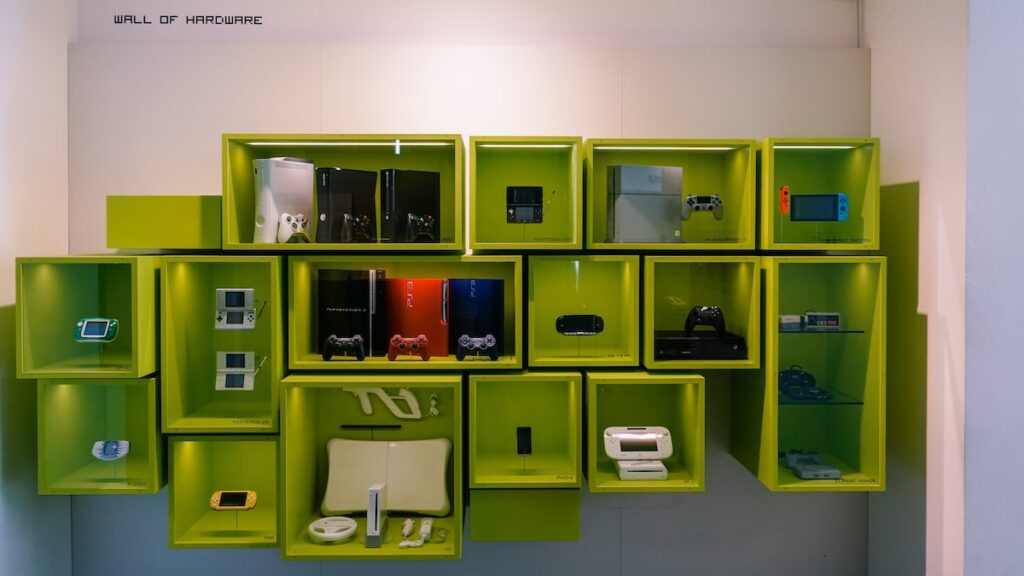
Although it’s fairly easy to misunderstand this museum as a place where you can endlessly play video games, that’s not true. There’s a lot of informational material on the walls to inform visitors about the importance of gaming in society, the problems it solves, and the ones it creates.
For example, the section on longing and digital games takes an anthropological approach to gaming. It discusses the desire to play these games but offers insights into how painful this desire can be for some people when they can’t immerse themselves in gaming for various reasons.
On the other hand, information about the commercialization of coin-op machines is connected with the decrease in production costs. As with other products surrounding us, this was the only way to make video games available to everyone -and most of us still remember the famous on-screen quote, “Insert coin to join.” Obviously, the games in the museum are free -there’s a switch that removes the need to insert a coin for playing.
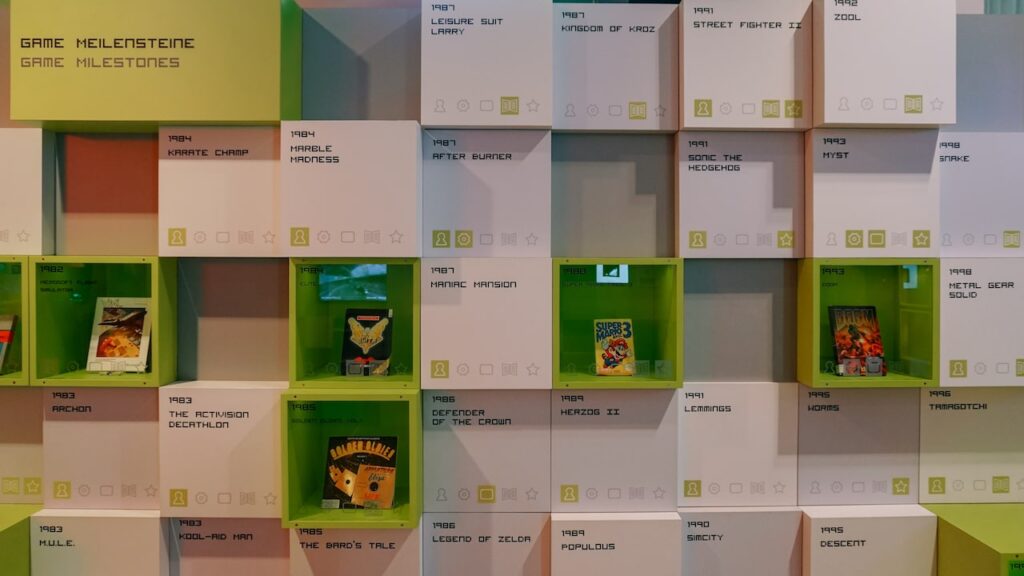
Moreover, the existence of various timelines on the walls gives you a great overview of the medium’s evolution. What I found even more important is the critical view of the culture of gaming. There’s talk about addiction and also about the mechanism that creates it. Additionally, it’s about the borders of virtual and physical reality and how the digital landscape can easily absorb the players.
Despite being a museum exclusively dedicated to gaming, the museum covers the topic from every possible angle, which visitors will definitely praise.
The gamer as author
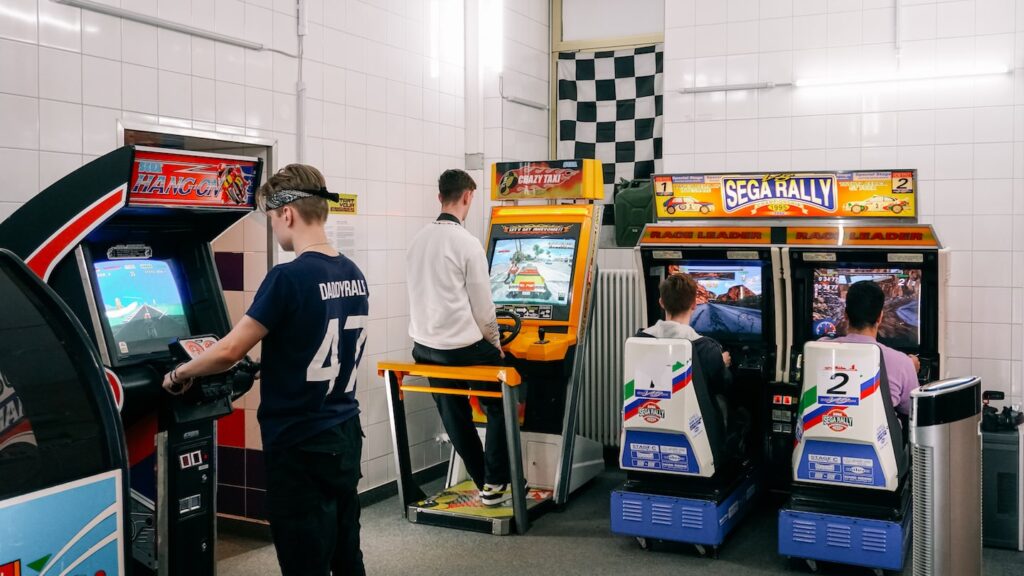
I dedicate a small section here because I want to add my favorite quote from the exhibition. It made me think of computer gaming from a different perspective, and I kept thinking about it for days. I was so impressed that I wrote it down on a piece of paper, and I copy it here. It is, of course, courtesy of the museum, and its title is “The Gamer as Author.” It reads:
“Computer games differ from traditional games as they are capable of transmitting tangible game narratives. In this respect, they are more like theater, literature, and film. However, their game narrative does not appear to have been written by an invisible author, but the author determines the course of action. This raises questions: What is the relationship between narrative and play in computer games? And can a story become more exciting if you are “playing” a role in it?”
That’s inspiring and very well written.
Tickets & Info for the Computer Games Museum Berlin
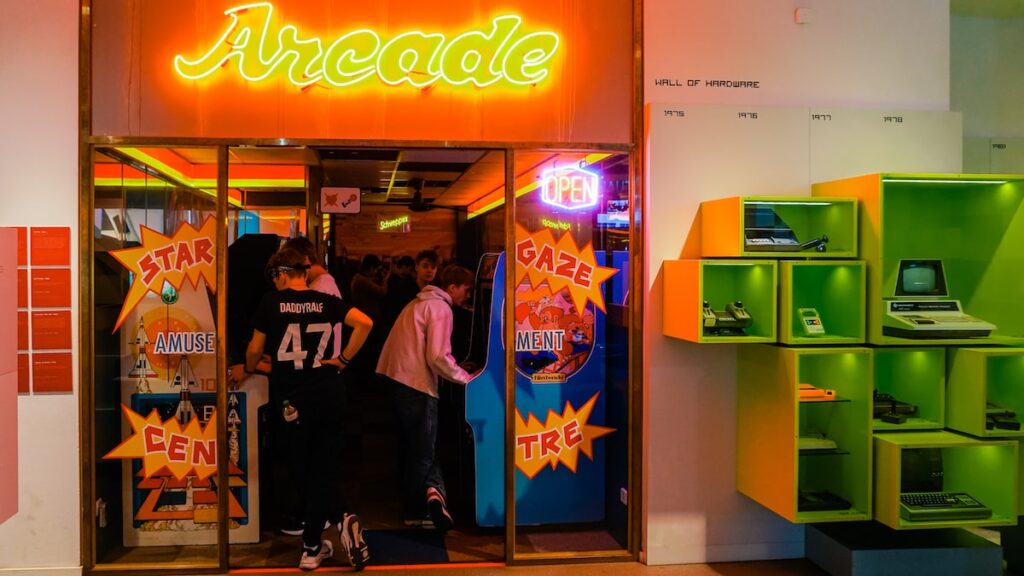
In this section, you will find information about your visit to the Computer Games Museum in Berlin.
Opening hours
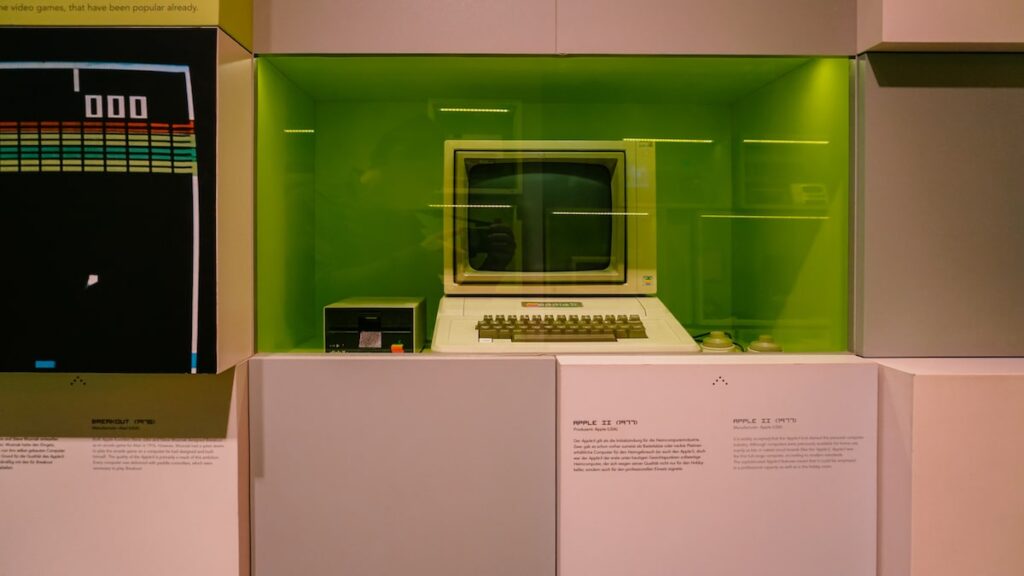
The Computer Games Museum in Berlin is open daily between 10 am and 8 pm.
Tickets

The Computer Games Museum Berlin tickets cost 12 euros for adults, and the reduced ticket for kids and seniors is 7 euros.
You can buy online your Computerspielemuseum tickets here or straight at the counter.
Berlin tip: As I wrote earlier, holders of the Berlin Welcome Cards have a discount or free entrance. Specifically, the Classic Welcome Card gives you a 25% discount, while the All-Inclusive gives you free entrance. If you plan to do extensive sightseeing in Berlin, use its public transport, and enjoy some unique activities, I highly recommend buying the Welcome Card. You can see the prices and offerings of the Welcome Card here.
Free guided tour
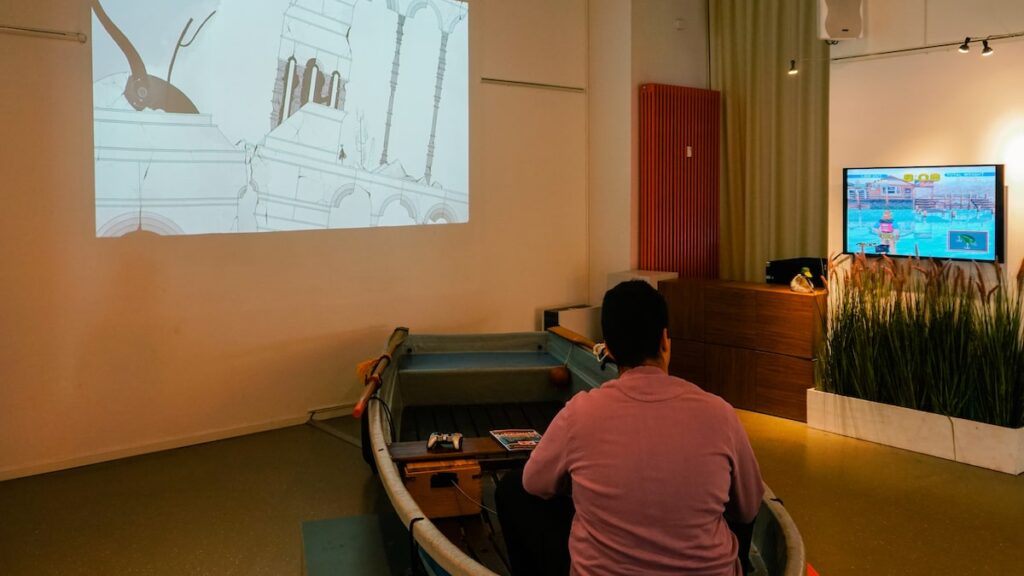
Every Saturday at 12:30 pm, the museum offers a free guided tour in English. Apparently, you need to pay an entry ticket, but there’s no extra fee for joining the tour.
A German tour takes place every Sunday at the same time.
Address

The museum is at Karl Marx Strasse 93A 10243 Berlin.
You can see the exact location on Google Maps here.
Computer Game Museum Berlin: Conclusion

I started this article with a local saying, and I will finish it with a more global one: don’t judge a book by its cover. Although it’s pretty easy to misunderstand the Computerspielemuseum as a place for computer geeks, it’s actually much more than that. Apart from playing for free legendary computer and arcade games of the past, you’ll also discover the fascinating history of gaming culture. We often consider museums as stiff institutions featuring impressive objects you can’t touch. However, in the Computer Games Museum Berlin, you can touch everything.
The creation of illusionary spaces is the cornerstone of our civilization, and this humble video game museum in Berlin feels dedicated to that. More than its interactive nature, I enjoyed studying the objects that shaped my childhood. These relics of the past have significance, but the Computer Games Museum made me reflect upon their very nature—how games shape us, what their effect on our personalities is, and how they change society.
You don’t have to be a gamer to enjoy the museum. Although being one will offer you extra joy because you can touch legendary machines, this is a place for curious minds. It is fascinating to see daily aspects of our lives from a societal and anthropological perspective. Yes, there is Pac-Man at the museum, but there are also so many things to uncover.
More about Berlin: 3 days in Berlin itinerary, Berlin River Cruise, Berlin Wall Memorial, See Berlin by bike
Pin it for later
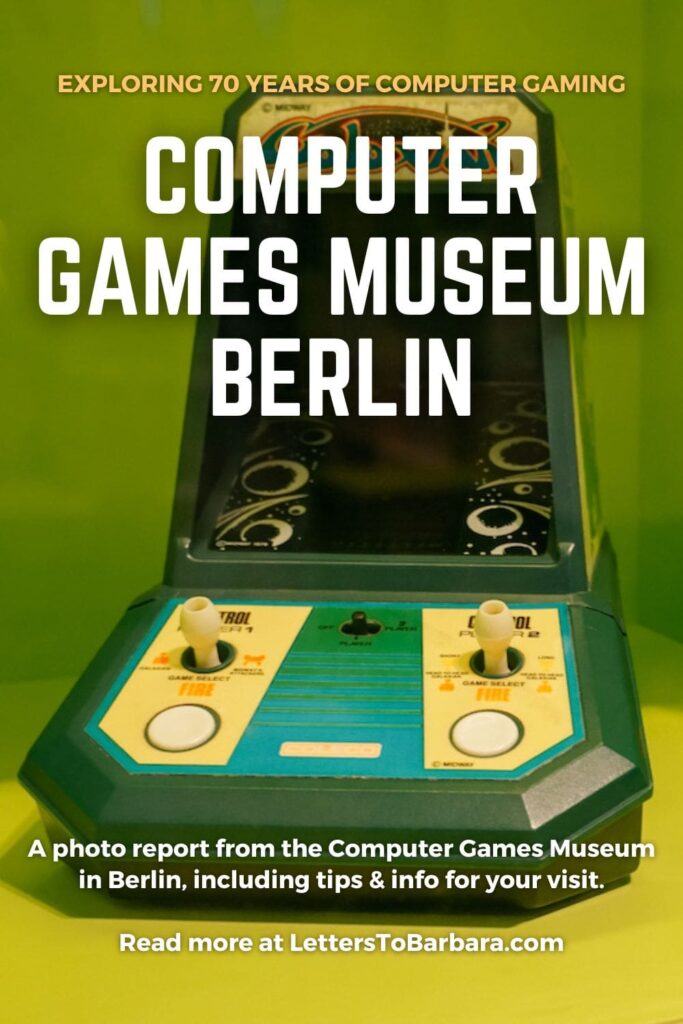
Sharing is caring. Share this article about the Computer Games Museum in Berlin, Germany, with your friends.
Last Updated on May 18, 2024 by George Pavlopoulos

